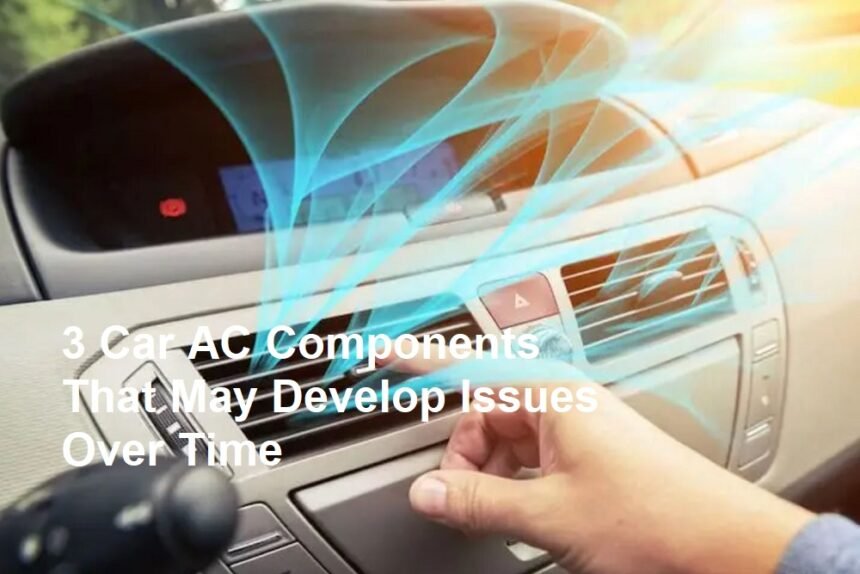A car’s air conditioning (AC) system is essential for maintaining comfort, especially during hot weather. However, like any other mechanical system, the AC system is subject to wear and tear over time. Certain components are more prone to developing issues as the vehicle ages or accumulates mileage. Understanding these components can help car owners identify potential problems early and take preventive measures. Here are three car AC components that are likely to start causing trouble over time:
- Compressor
The compressor is often referred to as the “heart” of the car’s AC system. Its primary function is to circulate refrigerant throughout the system, enabling the cooling process. The compressor is under constant pressure and operates in harsh conditions, making it one of the most vulnerable components.
Common Issues:
- Refrigerant Leaks: Over time, seals and gaskets in the compressor can wear out, leading to refrigerant leaks. This reduces the system’s cooling efficiency.
- Clutch Failure: The compressor clutch engages and disengages to control refrigerant flow. If the clutch fails, the compressor won’t function, and the AC will stop cooling.
- Noisy Operation: A failing compressor may produce unusual noises, such as grinding or squealing, indicating internal damage.
Prevention Tips:
- Regularly check refrigerant levels and top up if necessary.
- Have the compressor inspected during routine maintenance to catch issues early.
- Condenser
The condenser is located at the front of the car, near the radiator. Its job is to cool down the high-pressure refrigerant gas, turning it into a liquid. Because of its position, the condenser is exposed to dirt, debris, and road contaminants, which can affect its performance over time.
Common Issues:
- Clogging: Dirt, leaves, and bugs can accumulate on the condenser’s fins, blocking airflow and reducing its ability to dissipate heat.
- Corrosion: Exposure to moisture and road salt can cause the condenser to corrode, leading to leaks or reduced efficiency.
- Physical Damage: Rocks or debris from the road can damage the condenser’s fins, impairing its functionality.
Prevention Tips:
- Regularly clean the condenser to remove dirt and debris.
- Inspect the condenser for signs of damage or corrosion during servicing.
- Evaporator
The evaporator is located inside the car’s dashboard and is responsible for absorbing heat from the cabin air, cooling it down before it is blown back into the vehicle. While it is less exposed to external elements, the evaporator can still develop problems due to its constant use.
Common Issues:
- Mold and Mildew Growth: Moisture buildup in the evaporator can create a breeding ground for mold and mildew, leading to unpleasant odors and reduced air quality.
- Clogging: Dirt and dust can accumulate on the evaporator coils, reducing its ability to absorb heat and cool the air.
- Refrigerant Leaks: Like the compressor, the evaporator can develop leaks over time, causing a drop in cooling performance.
Prevention Tips:
- Use the AC system regularly, even in colder months, to prevent moisture buildup.
- Replace the cabin air filter periodically to reduce dirt and debris entering the evaporator.
Conclusion
A car’s AC system is a complex network of components working together to provide comfort. However, as the vehicle ages, certain parts like the compressor, condenser, and evaporator are more likely to develop issues. Regular maintenance, such as cleaning, inspecting, and replacing worn-out components, can help prolong the life of the AC system and ensure it continues to function efficiently. By staying proactive, car owners can avoid costly repairs and enjoy a cool, comfortable ride for years to come.













